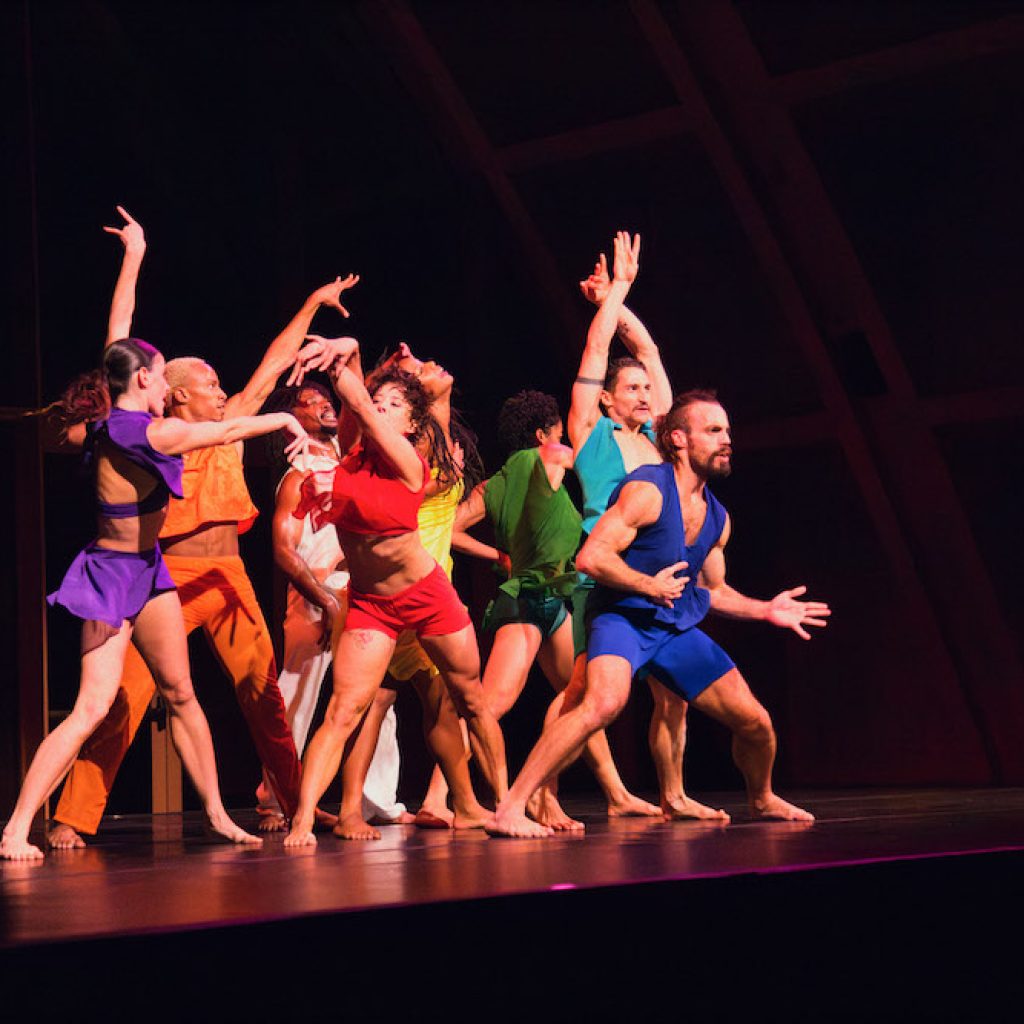BODYTRAFFIC wants to get the world up and moving. Artistic Director Tina Finkelman Berkett is committed to championing contemporary dance, educating audiences and inciting positive change. Founded in 2007, in Los Angeles, BODYTRAFFIC provides programs ranging from youth-focused intensive training and master classes to professional development for established artists that encourage their growth by nurturing their unique identities. At the heart of the company is the belief that movement – conceptual and physical – is our common language.
Dance Informa caught up with Tina FInkelman Berkett (Artistic Director), Trey McIntyre (newly joining BODYTRAFFIC as Creative Partner) and Julie Opiel (Director of Education and Community Engagement) to learn about the sweepingly open path of BODYTRAFFIC in the wake of receiving a million multi-year grant for professional and creative development.

What is the mission of BODYTRAFFIC?
Tina Finkelman Berkett
“The mission is to make people love dance. As artistic director, I want to ensure my dancers love what they do, and when people come to our shows, they will see how much the dancers love what they do. I want people to walk away with the love we feel for dance.”
Tell us a little bit about the journey that brought you here.
Berkett
“This company is the dream that I never knew I had. I’m a native New Yorker but moved to L.A. after graduating from Barnard College (where I studied math and economics). I’m a total convert to L.A.; I love it here. As a kid, I was worried dance wouldn’t be a viable profession for me, but I always knew I was a dancer. While at Barnard, I met Aszure Barton, who invited me to dance with her company. She was close with Mikhail Baryshnikov, who ended up sitting front row at one of our shows. This introduction led to becoming a founding member of Baryshnikov’s Hell’s Kitchen Dance for which I also served as the company’s dancer liaison.”
You are noted for expressing an interest in finding top-notch dancers but also want to let people in and the audience get to know them. Can you expand on this idea?
Berkett
“I invest in my dancers and I love, admire and cherish them. I see them not only as extraordinary dancers but as extraordinary human beings as well. This profession is hard because of the demands on the body and mind. We can spend upward of 40-50 hours a week together in rehearsal and planning, and the choreography can be very rigorous. My motto is to choose kindness. I vet company members very closely and believe in it being what I call a good ‘culture fit.’ I want dancers to grow in their artistry, and the way to do this is to ensure there is an environment that is safe and honest, so dancers can maximize their capabilities as performers.”
Trey McIntyre, you just joined as Creative Partner. What does this role mean for you, and where does it fit in your career as a choreographer?
Trey McIntyre
“I hadn’t planned on having such a close relationship with any dance company in my future. I have really liked how my life has been structured. But it’s Tina Berkett who makes me want to be here. What she’s accomplished with this company, in this city, is remarkable to me and allows me to utilize virtually all of the skills I’ve honed, both as an artist and an arts administrator.”
Can you describe your process when you begin working on a new piece of choreography?
McIntyre
“There can be quite a bit of variance, based on circumstances, but if there’s one thing I do most consistently, it is serendipitous research. I begin from whatever idea I want to explore and learn from and just start seeing where the wind takes me, following tangents. It’s most often the unconscious associations I have early on, ones that I may not understand until the work is complete, that provide the greatest depth. And then those things become a treasure chest to draw from in the studio, whether or not I’m conscious that I’m doing it. Then I slowly build an architecture in my mind and create a journey from beginning to end. Something to hold these thoughts together. Then, in the studio, I’m very trusting of what occurs to me in the moment. It’s always the best thing, in all things, what comes in the moment.”
BODYTRAFFIC has a robust educational arm as well. How was the educational program born? And what is the driving ethos?
Julie Opiel
“The driving ethos behind all our education programming can be summed up by BODYTRAFFIC’s core values: generosity, creative integrity, grit, kindness, inclusion and supported growth. The primary goal of our training programs is to support the whole dancer, to not only provide rigorous technical training, but to also empower dancers with an understanding of their unique value to the dance community at large. We focus on career longevity with a special awareness of mental health, avoiding burnout, and building a support network. With scholarships and incredibly diverse faculty, we strive to create inclusive and equitable programming that is representative of the dance world we want to see. The Winter 2025 program will focus on career development, specifically building on leadership skills like how to frame and communicate your personal narrative, building your support network, goal-setting,and developing tools for resilience.”
Tina, you must be very proud of the expansion of the company in all its facets. What are some lessons you’ve learned along the way and that serve as the guiding principle for your work with BODYTRAFFIC?
Berkett
“I believe life is all about showing up. When I was in my 20s, my father, who worked in finance, said, ‘You have a gift – it would be selfish not to share it.’ Sharing my ‘gift’ could only happen if I showed up. I think so much of my success has been because I showed up at the right place at the right time. Everyday, the company members and I show up for what’s possible. We want to build audiences and to show people how much love dance can bring into their lives.”
For more information on BODYTRAFFIC, visit www.bodytraffic.com.
By Nicole Colbert of Dance Informa.



















